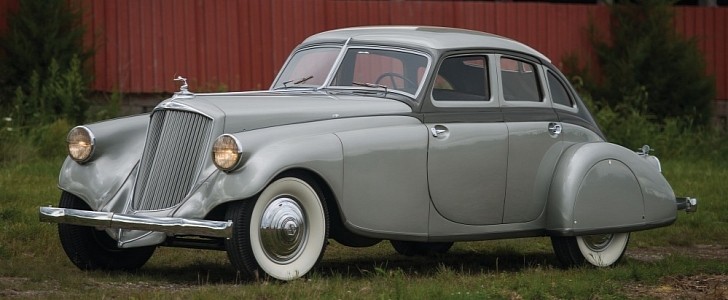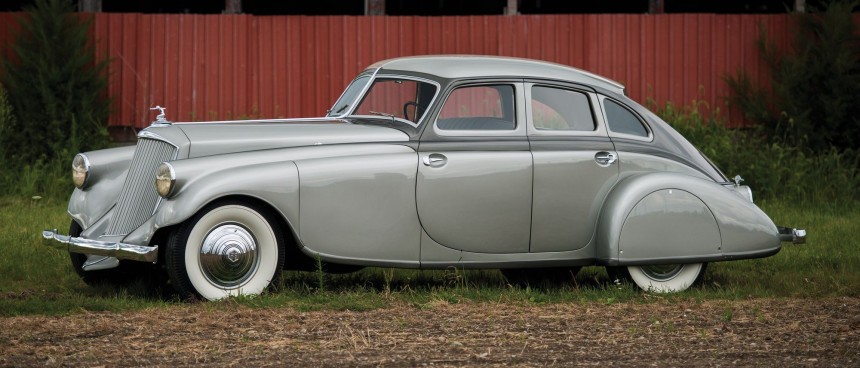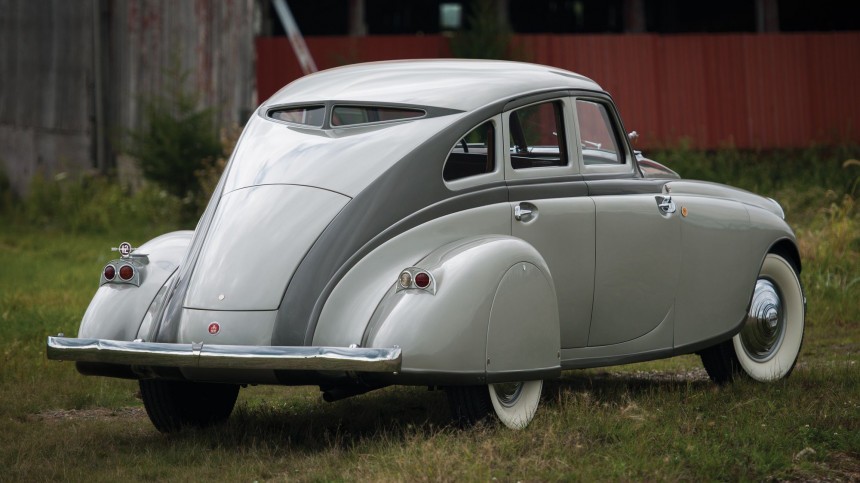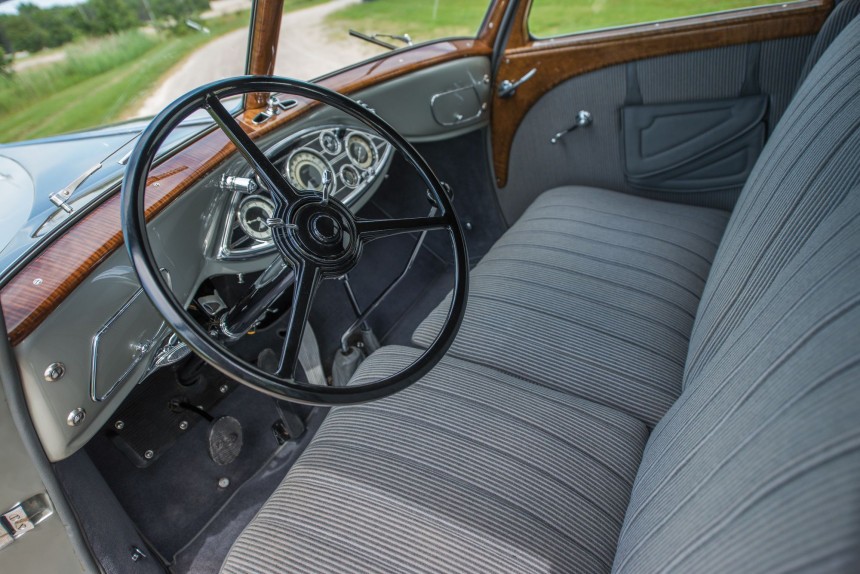The 1930s are now most famous for the Great Depression. For us gearheads, it's an era when many iconic carmakers went belly up. But as difficult as they were, these years spawned a few great automobiles. While some luxury companies went bankrupt, others opted to develop more affordable products. Pierce-Arrow went all-in with the stunning Silver Arrow.
The Great Depression hit the United States in 1929. By 1933, one in four Americans was unemployed and former millionaires were counting pennies. With no government-sponsored work relief available, it was all doom and gloom. And the automakers weren't doing any better either.
Production had dropped rather dramatically in just a few years. In 1929, Americans had bought more than four million cars. In 1932, this figure had dropped to only a million. While Ford had to slash yearly production from more than 1.5 million to only 300,000, premium carmakers like Peerless and Marmon disappeared altogether. And many more companies declared bankruptcy by the end of the 1930s.
Pierce-Arrow was one of the luxury firms that refused to give up. Established in 1901, the Buffalo-based company had become a status symbol in just a couple of decades. Favored by Hollywood stars and tycoons, Pierce-Arrow automobiles were also popular among royal families the world over. But things started to go south in the late 1920s.
Acquired by Studebaker in 1928, Pierce-Arrow started to leak money as the Great Depression hit. But unlike most of its rivals, it refused to develop and offer a lower-priced car. The Buffalo-based firm went in a completely different direction and opted to build its most opulent vehicle yet, the Silver Arrow.
Introduced at the 1933 New York Auto Show, the Silver Arrow was announced with the slogan "Suddenly it's 1940!" And it was. With its Art Deco styling, streamlined body, and innovative features, the Silver Arrow provided a glimpse into the future. No one could afford it, but the car caused an absolute sensation.
Conceived at a time when Piece-Arrow was losing millions, the Silver Arrow was penned by Phil Wright, who was still in his 20s, and immediately approved by Harley Earl. With fully integrated fenders and headlamps mounted high with the line flowing up and back past the doors, the Silver Arrow resembled no other car from the company. And no other car available at the time, for that matter.
The car also featured a few groundbreaking aero features, such as flush-fitting rear fender skirts, recessed door handles (common on modern cars), and a sharp sloping rear section. The cabin was flanked by a V-shaped windscreen in the front and a slit-like window in the rear. The latter was pretty useless in terms of visibility, but it added to the car's futuristic, Batmobile-like styling.
Pierce-Arrow's out-of-the-box thinking continued with the placement of the spare wheels. Most cars of the era had spares mounted on the rear (attached to the trunk box) or placed on the front fenders, which were individual units, separated from the body. The Silver Arrow had them hidden in lockers in the impressively long front fenders. These could be opened by remote controls in the dash.
The Silver Arrow also pioneered the passenger floor set below the frame side members, a feature that Hudson debuted in production cars as the "step-down design" some 15 years later. The cabin was decidedly luxurious, being draped in leather, diamond-quilted broadcloth, and hand-finished curly maple. The rear section included a radio speaker, a clock, and even a speedometer.
Speaking of which, thanks to a 462-cubic-inch (7.6-liter) V12 engine rated at 175 horsepower, the Silver Arrow was fast enough to turn that speedo to 115 mph (185 kph). Despite a curb weight of 5,700 pounds (2,585 kg)!
Pierce-Arrow rushed to have five examples of the Silver Arrow ready for the 1933 New York Auto Show. But with a price tag of $10,000, about 25% more than the most expensive Cadillac of the era (the equivalent of more than $200,000 in 2021), it essentially remained a show car.
It could very well be America's first-ever concept vehicle, a feat usually assigned to the Buick Y-Job design study of 1938.
Pierce-Arrow did develop a production variant of the Silver Arrow, but it featured a heavily toned-down design and a shorter body. Unfortunately, the Silver Arrow wasn't enough to stop the company's declining sales and Pierce-Arrow declared bankruptcy in 1938.
Three of the five original Silver Arrow cars have soldiered on to this day and they're among the most expensive American classics. They don't come up at auction often, but when they do, they change hands for more than $2 million. It's not only the most sensational car designed in the early 1930s, it's also America's first futuristic concept vehicle.
Production had dropped rather dramatically in just a few years. In 1929, Americans had bought more than four million cars. In 1932, this figure had dropped to only a million. While Ford had to slash yearly production from more than 1.5 million to only 300,000, premium carmakers like Peerless and Marmon disappeared altogether. And many more companies declared bankruptcy by the end of the 1930s.
Pierce-Arrow was one of the luxury firms that refused to give up. Established in 1901, the Buffalo-based company had become a status symbol in just a couple of decades. Favored by Hollywood stars and tycoons, Pierce-Arrow automobiles were also popular among royal families the world over. But things started to go south in the late 1920s.
Acquired by Studebaker in 1928, Pierce-Arrow started to leak money as the Great Depression hit. But unlike most of its rivals, it refused to develop and offer a lower-priced car. The Buffalo-based firm went in a completely different direction and opted to build its most opulent vehicle yet, the Silver Arrow.
Conceived at a time when Piece-Arrow was losing millions, the Silver Arrow was penned by Phil Wright, who was still in his 20s, and immediately approved by Harley Earl. With fully integrated fenders and headlamps mounted high with the line flowing up and back past the doors, the Silver Arrow resembled no other car from the company. And no other car available at the time, for that matter.
The car also featured a few groundbreaking aero features, such as flush-fitting rear fender skirts, recessed door handles (common on modern cars), and a sharp sloping rear section. The cabin was flanked by a V-shaped windscreen in the front and a slit-like window in the rear. The latter was pretty useless in terms of visibility, but it added to the car's futuristic, Batmobile-like styling.
Pierce-Arrow's out-of-the-box thinking continued with the placement of the spare wheels. Most cars of the era had spares mounted on the rear (attached to the trunk box) or placed on the front fenders, which were individual units, separated from the body. The Silver Arrow had them hidden in lockers in the impressively long front fenders. These could be opened by remote controls in the dash.
Speaking of which, thanks to a 462-cubic-inch (7.6-liter) V12 engine rated at 175 horsepower, the Silver Arrow was fast enough to turn that speedo to 115 mph (185 kph). Despite a curb weight of 5,700 pounds (2,585 kg)!
Pierce-Arrow rushed to have five examples of the Silver Arrow ready for the 1933 New York Auto Show. But with a price tag of $10,000, about 25% more than the most expensive Cadillac of the era (the equivalent of more than $200,000 in 2021), it essentially remained a show car.
It could very well be America's first-ever concept vehicle, a feat usually assigned to the Buick Y-Job design study of 1938.
Three of the five original Silver Arrow cars have soldiered on to this day and they're among the most expensive American classics. They don't come up at auction often, but when they do, they change hands for more than $2 million. It's not only the most sensational car designed in the early 1930s, it's also America's first futuristic concept vehicle.

















